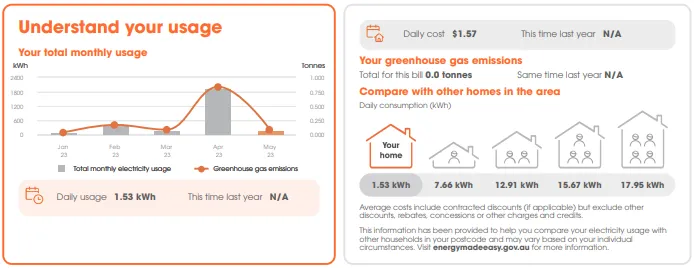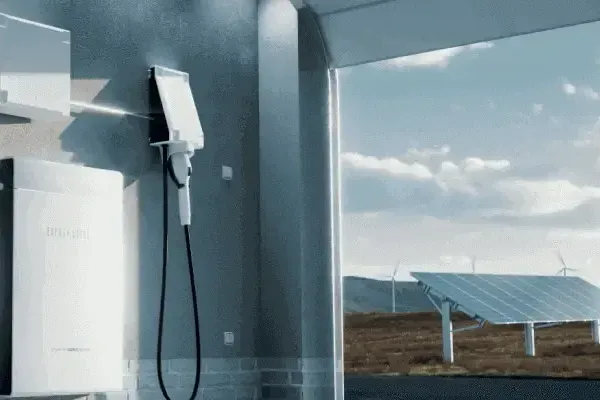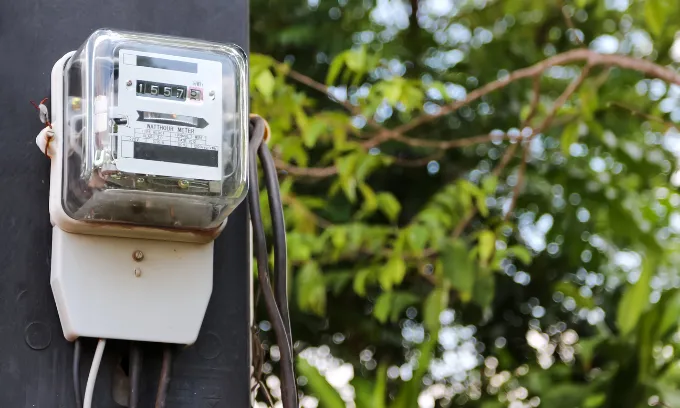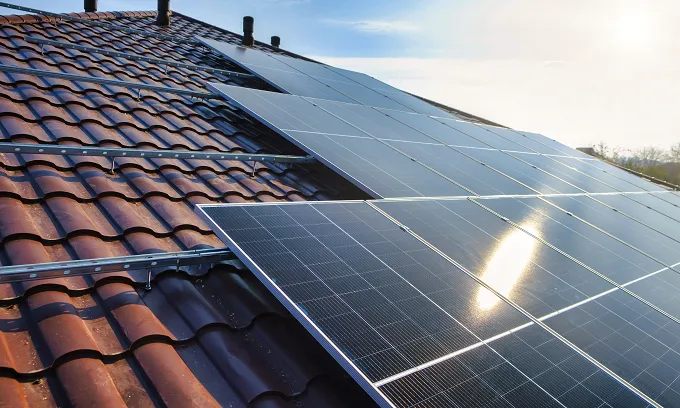Average Australian electricity bill
The following table shows the average electricity bill by state across Australia based on Canstar’s research.
State | Average quarterly |
|---|---|
Queensland | $502 |
Victoria | $358 |
Australian Capital Territory | $580 |
New South Wales | $450 |
South Australia | $549 |
Tasmania | $323 |
Source: www.canstar.com.au - 15/07/2025. Electricity usage cost estimates based on the average usage rates from the above table. Scenario based on a customer who uses the same amount of electricity as the reference annual usage for a single rate plan from each distributor. Based on a 365-day year. Postcodes used for examples are in order: 4064, 3122, 2600, 2040, 5033 and 7000.
Households in Tasmania and Victoria reported the lowest average electricity bills.
Households in the Australian Capital Territory, South Australia and New South Wales reported the highest quarterly average electricity bills.
Average electricity bill based on household size
The following table shows the average electricity bill by household size across Australia based on Canstar’s research.
Household size | Average quarterly electricity bill |
|---|---|
1 person | $263 |
2 people | $322 |
3 people | $384 |
4 people | $420 |
5 or more people | $453 |
Source: Canstar research, December 2024.
Average electricity bill based on age group
You’ve now seen the average costs by state, capital city and household size – but how does your age impact the amount you’ll be charged for electricity in Australia? Canstar collated recent data to show the average electricity bills by age group at a national level.
Age group | Average quarterly electricity bill |
|---|---|
18 to 29 years | $278 |
30 to 39 years | $282 |
40 to 49 years | $284 |
50 to 59 years | $291 |
60 to 69 years | $249 |
70 years or more | $228 |
Source: Canstar research, December 2024.
Retirees and seniors typically pay less for power on average for multiple reasons:
- Some electricity retailers offer additional discounts for senior cardholders and pensioners.
- Seniors may be eligible for government rebates on their electricity bills, potentially reducing their fees below the average electricity bill for a two-person or one-person household.
- Younger people may live in larger households with high electricity usage needs, while older energy customers are more likely to have a solar system installed.
- Younger Australians are more likely to live in rental properties, which may limit their access to energy-efficient technologies or upgrades.
What impacts electricity bills?
Electricity usage
How much your bill costs positively varies with how much electricity you’re using. The more energy you consume, the larger the bill. How much electricity is used is affected by the following:
- Size of the household: Small households of two or three people will typically use less energy than a larger household of four or five people.
- Energy efficiency of appliances: Not all appliances are made equal, with some being more energy-intensive than others (e.g. air conditioners and clothes dryers).
- How often do you use your appliances: How often you use your appliances, leave them switched on or on standby influences your electricity usage.
- Season and climate: Colder seasons or climates could influence how often you take hot showers or dial up indoor heating. Conversely, summer seasons or warmer climates could see an uptick in your air-conditioning use.
Electricity prices
The other major factor in determining energy costs is the price you pay for electricity.
On every bill, Aussies should expect to pay two charges — supply charges and usage charges:
- Supply charges: Supply charges are a fixed daily charge (in cents) that households must pay to remain connected to the electricity grid.
- Usage Charges: Usage charges are variable charges (in c/kWh) that households must pay for every kWh of electricity consumed.
However, usage charges can vary significantly based on the type of tariff you’re on, which refers to how you’re billed for your energy usage:
- Single rate tariff: Customers on a single rate tariff pay a flat rate for every unit of electricity, irrespective of the time it was consumed.
- Time of use tariff: Customers on a time of use tariff pay higher usage charges during peak hours and lower usage charges during off-peak hours. Shoulder rates, which sit between peak and off-peak hours, are priced somewhere in the middle.
- Controlled load tariff: This is a tariff exclusively for high-consumption appliances, which are metered at a lower rate and separately from the rest of your home.
- Demand tariff: Supply and usage charges with an additional 'demand charge'. The demand charge is set based on your maximum energy use at a specified time.
How else can I tell if I pay the average electricity bills in Australia?
Most electricity providers publish helpful information in their bill statements, such as
- The actual amount of energy used and what it costs.
- How your usage has changed over time.
- How your usage compares to other customers in your area.
The following image is taken from an Alinta Energy bill, showing the customer’s electricity usage compared to that of other households.
For more information on your electricity bills, visit the Canstar guide on how to read your electricity bill.

Source: alinta.com.au
Alternatively, you can also assess your real-time or historical usage by installing a power usage monitor or through your provider's dedicated smartphone app (assuming you already have a smart meter installed).
Could I pay less than the average electricity bill?
Yes, you could pay less than the average electricity bill in your state. However, how much you can save boils down to how proactive you are in managing your bills and comparing energy plans in the market.
If you’re keen to reduce your energy bill, it’s a good idea to start by assessing your household energy usage, reducing your energy usage and/or finding a better energy deal.
When shopping around, you should consider the annual costs for the cheapest single-rate electricity plans in your state as compared to your current electricity plan’s annual cost.
For example, the table below shows some of Australia’s cheapest electricity plans, based on a general usage assumption in a selected postcode for each capital city.
Capital city | Cheapest electricity plan (annual costs) |
|---|---|
Sydney | $1,464 |
Melbourne | $1,107 |
Brisbane | $1,599 |
Adelaide | $1,817 |
Canberra | $1,992 |
Hobart | $1,216 |
Source: www.canstar.com.au - 15/07/2025. Based on single rate electricity plans on Canstar's database; excluding solar-only plans. Annual costs calculated based on the estimated lowest possible price a representative customer would be charged in a year, assuming all conditions of discounts offered (if any) have been met. Representative customer based on the reference usage for NSW, VIC, QLD, ACT, and SA (per Victorian default offer for VIC, ICRC for ACT, and AER for others) or the median usage in the Office of the Tasmania Regulator's report, Typical Electricity Customers in Tasmania 2022 for TAS.
Keep in mind that costs can vary significantly between suburbs and household sizes, but this provides a helpful guide as to what you could be paying.
Start comparing energy plans
The good news is that – unless you are already on the best deal in your area – there are potentially big savings to be had by shopping around.
Whether you’re comparing your expenses to the average electricity bill or aiming to pay lower than the average electricity bill for a two-person household, proactive research and switching to a better plan will help you save money.








